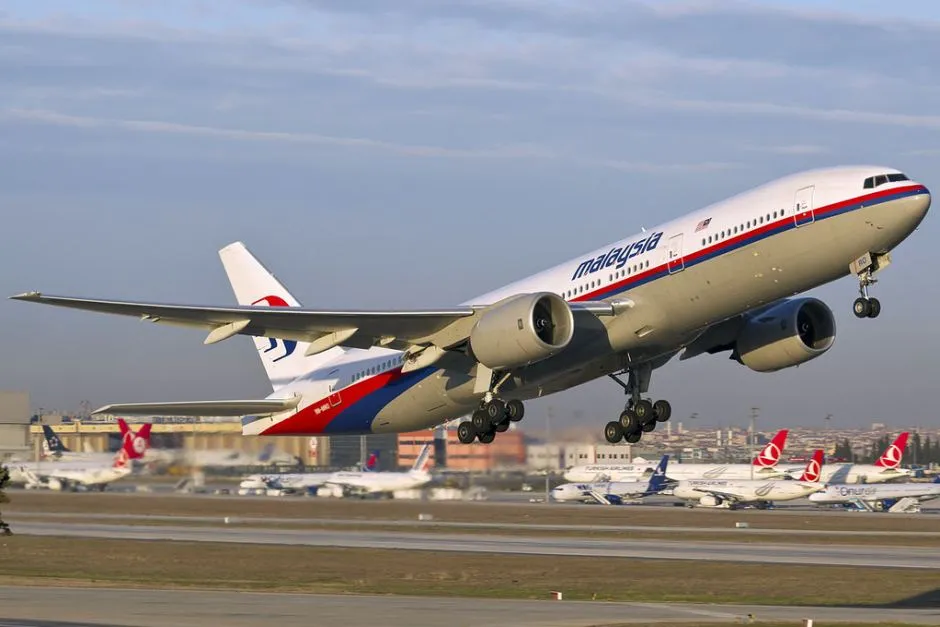
MH370 TRACKING EXPERT DEMONSTRATES HIS TECHNOLOGY ONCE AGAIN
Jun 25, 2022

A leading expert in aircraft tracking has once again showcased his innovative technology aimed at solving the mystery of Malaysia Airlines Flight MH370. Utilizing advanced satellite data analysis and sophisticated algorithms, he demonstrated how his methods could potentially reveal the aircraft's final flight path. His continuous efforts emphasize the importance of developing new tracking systems to enhance aviation safety and ensure that similar incidents do not occur in the future. The expert's passion for uncovering the truth behind the disappearance of MH370 highlights both the challenges faced in aviation and the need for ongoing advancements in tracking capabilities.
Introduction to MH370 Tracking Technology
The disappearance of Malaysia Airlines Flight MH370 remains one of the greatest mysteries in aviation history. Despite extensive search efforts, the wreckage has not been fully recovered, leading to a plethora of theories and advanced tracking technologies designed to locate the aircraft. Recently, a prominent MH370 tracking expert has once again demonstrated his innovative technology, showcasing its capabilities to pinpoint flight paths and analyze data effectively.
The Importance of Advanced Tracking Technologies
Tracking technologies play a crucial role in aviation safety and search operations. The advancements in satellite-based tracking systems have allowed experts to monitor aircraft in real-time, providing vital information that can aid in recovery efforts. The innovative tools and methodologies developed by tracking experts have transformed the way aviation incidents are investigated.
Overview of the Demonstration
During the recent demonstration, the MH370 tracking expert utilized a variety of tools to analyze flight data and simulate potential flight paths. This technology employs sophisticated algorithms and data visualization techniques to present findings in a comprehensible manner. Key elements included:
- Real-time data analysis
- Historical flight path simulations
- Geospatial mapping
Real-Time Data Analysis
Real-time data analysis is crucial for understanding the events leading to an aircraft's disappearance. The expert’s technology allows users to access and analyze live data streams from various sources, such as radar and satellite feeds. This capability not only aids in tracking current flights but also enhances the understanding of past flight behavior.
Historical Flight Path Simulations
One of the standout features of the technology demonstrated was the ability to simulate historical flight paths based on available data. By reconstructing the journey of MH370, the expert can provide insights into the aircraft's last known positions, potential diversions, and the environmental conditions it faced. These simulations are invaluable for refining search areas and understanding the aircraft's trajectory.
Geospatial Mapping Tools
Geospatial mapping tools play a pivotal role in visualizing data related to aviation incidents. The expert showcased how these tools can overlay flight paths onto maps, highlighting regions that require focused search efforts. By utilizing high-resolution imagery and topographical data, the technology enables search teams to assess areas with a higher likelihood of containing wreckage.
Collaboration with Other Experts
Collaboration among various aviation professionals is essential for enhancing tracking methodologies. The MH370 tracking expert has continually worked with engineers, data scientists, and aviation analysts to refine his technology. This multidisciplinary approach has led to the development of more effective tracking systems that can be adapted for future aviation incidents.
Public Interest and Involvement
The ongoing mystery of MH370 has captivated the public's attention, leading to significant interest in tracking technologies. The expert's demonstrations have not only educated the public about aviation safety but have also inspired a grassroots movement to support search efforts. Engaging the public through educational seminars and online platforms has proven beneficial in raising awareness and funding for further research.
Challenges Faced in Tracking MH370
Despite the advancements in tracking technology, challenges remain. The vastness of the ocean, combined with the limited data available from MH370’s final moments, complicates recovery efforts. The expert discussed the limitations of existing technologies and how his innovations aim to overcome these obstacles. Improved satellite capabilities and data-sharing agreements are crucial for enhancing search operations.
Future of Aviation Tracking Technologies
The future of aviation tracking technologies looks promising, with continuous advancements being made. The MH370 tracking expert is at the forefront of this transformation, pushing for innovations that integrate artificial intelligence and machine learning. These technologies can analyze vast amounts of data more efficiently, identifying patterns that may lead to the discovery of missing aircraft.
Conclusion: A Ray of Hope for MH370
The demonstration of the advanced tracking technology by the MH370 expert serves as a beacon of hope for families and loved ones still searching for answers. As technology evolves, so too does the potential to uncover the mysteries surrounding MH370. The commitment of tracking experts to enhance aviation safety and recovery operations is crucial in ensuring that such incidents are met with the best possible responses.
For more information on tracking technologies and the ongoing search for MH370, stay tuned for the latest updates from aviation experts and industry leaders.
Related Articles

Explore Thailand: The Best Islands to Visit for Paradise, Adventure, and Relaxation

The Ultimate Guide to the Best Islands in Thailand for Your Next Getaway

Do babies need passports? How to get a passport for a newborn

How to get a U.S. passport fast: here’s how to expedite the process

What is Mobile Passport Control: 5 reasons why you should use it

SENTRI vs. Global Entry: A detailed guide

Do you need a passport to go to the Bahamas? Let’s find out

Do you need a passport to go to Mexico? A detailed guide

Do you need a passport to go to Canada? We got the answer

Do You Need a Passport for a Cruise: An Essential Travel Guide

Booster Seat Requirements: All the Rules to Follow in Your Rental Car

What Are the World’s Most Powerful Passports, and How Does Yours Rank?

How to Take a Passport Photo at Home: A Helpful Guide

You've got to have heart! Southwest's new livery

Your opinion: Should water be free on low cost carriers?

Young women bolder than guys as solo travellers
